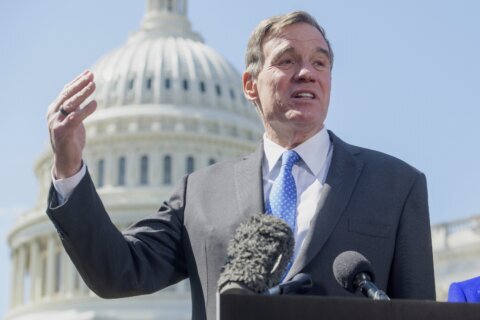This article was republished with permission from WTOP’s news partner InsideNoVa.com. Sign up for InsideNoVa.com’s free email subscription today.
This article was written by WTOP’s news partner, InsideNoVa.com, and republished with permission. Sign up for InsideNoVa.com’s free email subscription today.
Students in Virginia are struggling less with post-graduation debt than in most other states, according to a study conducted by the financial website WalletHub.
“Virginia is the 13th state with the least student debt,” WalletHub analyst Jill Gonzalez told The Center Square via email. The study ranked all 50 states and D.C.
“This is due to its low student debt level as a share of income (less than 40 percent), its low student loan default rate (less than 10 percent), and low share of student loan borrowers aged 50 [or older] (less than six percent),” Gonzalez said. “Other factors that contributed to the state ranking in the top half include the low unemployment rate among the population aged 25-34, and the availability of student jobs.”
WalletHub ranked each state in two categories — student indebtedness and grant and student work opportunities — and both were judged by several different factors.
Student indebtedness was more heavily weighted, making up 85 percent of the score. The highest weighted factors were the state’s share of students in debt, the student debt as a share of income, and the share of student loan borrowers more than 50 years old.
Chris Braunlich, president of The Thomas Jefferson Institute, told The Center Square via email that the state’s strong economy and the types of jobs available likely play a role in students’ ability to pay down their debt. Just this week, CNBC ranked Virginia as having the best economy in the country for 2019.
“I suspect there is a correlation between student debt and a strong economy driven by a highly educated workforce,” Braunlich said. “One of the reasons CNBC has named Virginia as the top state for business in 2019 is the existence of a strong and large pool of educated workers to draw from as a source to recruit new talent. This is aided, too, by defense spending, which is now 12 percent of Virginia’s economy. In short: graduates who are working are more likely to pay down their student debt.”
Student tuition costs have continued to rise greater than the rate of inflation and enrollment rates are much higher than older generations. Both of these factors, among others, have led to student indebtedness becoming a national concern and a talking point in the 2016 presidential debates.
To address the continued rise of student debt, the Virginia General Assembly passed legislation that provided monetary incentives for many of Virginia’s colleges to freeze tuition for the 2019-2020 school year. All four-year public colleges took the incentives and froze their tuition.
Russell Rhine, a policy analyst for the Cato Institute’s Center for Educational Freedom, told The Center Square via email that he does not believe these types of policies are helpful at actually reducing costs. The Cato Institute is a libertarian think tank based in D.C.
“Distinguishing between ‘the price a student pays’ and ‘[education] cost’ is important,” Rhine said. “This coming year, Virginia’s higher-education cost will rise despite freezing tuition. However, the increase will be paid by Virginia taxpayers [and] not the students. If the goal is to lower education costs, it’s not a good program.”
Rhine also warned that free college or debt forgiveness proposals will just shift the cost burden and discourage people from making responsible financial decisions in the future.







